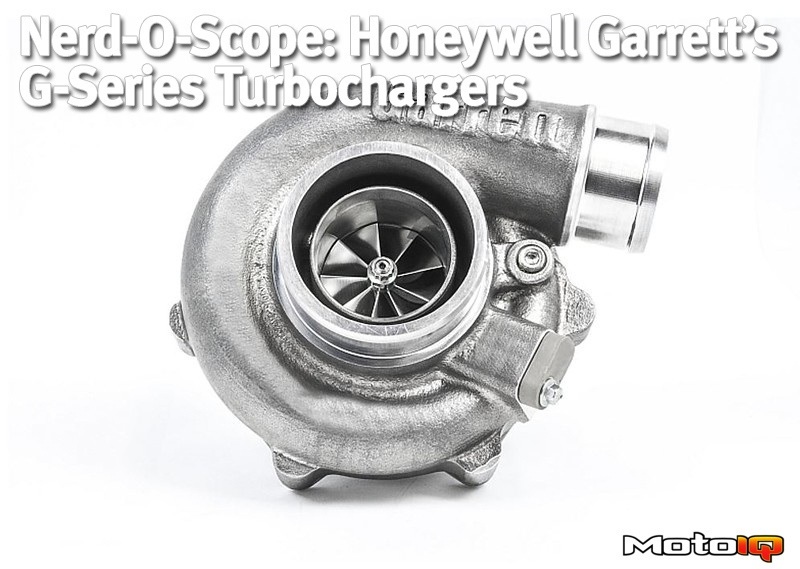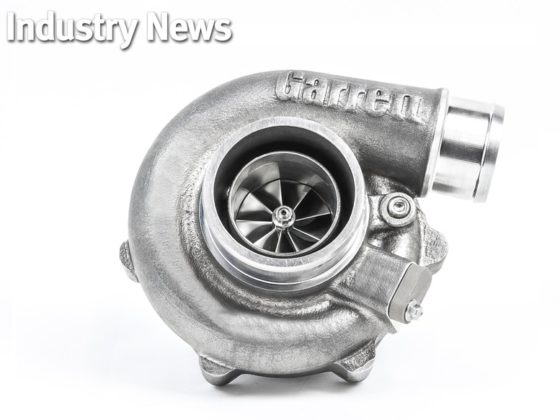,

Why is this massive flow capability from a small wheel important? Transient response is a function of rotational inertia. Anything you can do to reduce the inertia of the rotating compressor and turbine wheels will improve transient response. Remember, inertia is a function of mass x radius2. In going from the GTX Gen2 71mm compressor to the G25-660 67mm compressor wheel, the inertia reduction due to mass reduction is ~5.5%; this assumes a straight scaling of mass with diameter, which should be close enough for back of the envelope calculations. Edit: I had a bit of a brain fart. As the compressor and turbine wheels are basically cylinders (volume of a cylinder = PI * r2 * height), the mass should scale by radius2. So the mass reduction is ~11%. The inertia reduction due to decreasing the diameter/radius of the compressor wheel is ~11%. The result has a total compressor inertia reduction of ~20%-21% while maintaining the same flow capability. Again, this is a back of the envelope calculation.
Looking at the turbine side, The G25-660 uses a 54mm diameter turbine wheel in Mar-M, whereas the GTX30 uses a 60mm wheel in Inconel. Mar-M is slightly less dense than Inconel by ~1.4%, based on the datasheets I could find, so we’ll just call it a wash. The inertia reduction due to mass reduction is a big ~19%. The inertia reduction due to radius reduction is a matching ~19% due to inertia being a function of radius squared, so a radius reduction has an exponential effect on inertia. The total inertia reduction on the turbine side is ~35%. The turbine wheel is much heavier than the compressor wheel, so a greater inertia reduction on the turbine side has even more impact on transient response. It’s fair to say the G25-660 will have significantly snappier response compared to the GTX3071R Gen2.
 To go along with the higher temperature capable Mar-M turbine wheel material is a new family of stainless steel turbine housings also rated to 1050 degrees Celsius.
To go along with the higher temperature capable Mar-M turbine wheel material is a new family of stainless steel turbine housings also rated to 1050 degrees Celsius.
 This is the new G-Series center housing which takes design features from OEM applications. Pretty much every OEM gasoline turbocharger has gone this way, as it allows the OEMs to use the same center housing casting on many different applications, saving costs. It has four water/coolant ports which can be configured depending on the application. The compressor backplate is now integrated into the center housing. No more dealing with the annoying snap ring of the GT/GTX center housing and backplate joint. A really nice upgrade is the v-band joint between the center housing and turbine housing. No more dealing with the annoying six bolts on the GT/GTX design. Also note the length of the center housing has been minimized to make the turbo as easy to package as possible in tight spaces.
This is the new G-Series center housing which takes design features from OEM applications. Pretty much every OEM gasoline turbocharger has gone this way, as it allows the OEMs to use the same center housing casting on many different applications, saving costs. It has four water/coolant ports which can be configured depending on the application. The compressor backplate is now integrated into the center housing. No more dealing with the annoying snap ring of the GT/GTX center housing and backplate joint. A really nice upgrade is the v-band joint between the center housing and turbine housing. No more dealing with the annoying six bolts on the GT/GTX design. Also note the length of the center housing has been minimized to make the turbo as easy to package as possible in tight spaces.
 Inside the new center housing are a few upgrades borrowing from modern OEM turbo practice. Both the compressor side and turbine side get two piston rings to minimize oil seeping by. There’s also an oil deflector on the compressor side. These new features will reduce the volume of oil getting into the intercooler piping and sneaking past the turbine wheel into the exhaust. Those things mean more power and lower emissions.
Inside the new center housing are a few upgrades borrowing from modern OEM turbo practice. Both the compressor side and turbine side get two piston rings to minimize oil seeping by. There’s also an oil deflector on the compressor side. These new features will reduce the volume of oil getting into the intercooler piping and sneaking past the turbine wheel into the exhaust. Those things mean more power and lower emissions.



